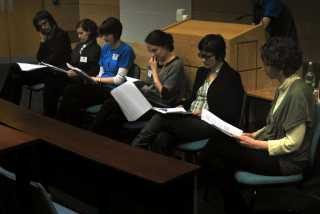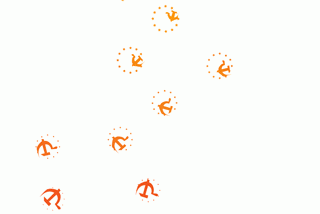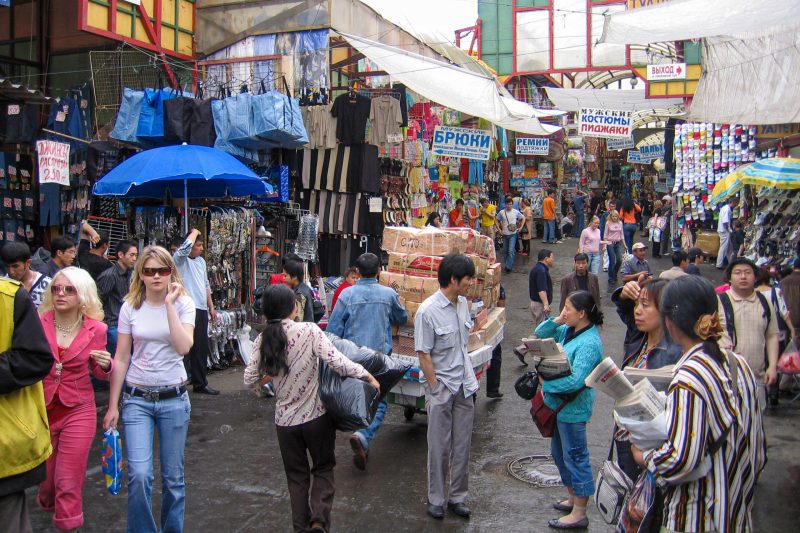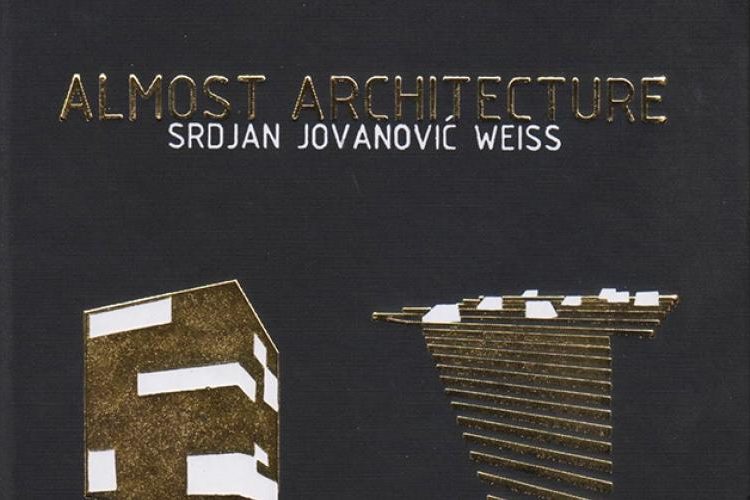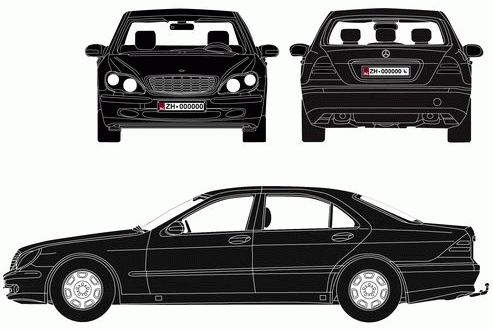- Paulo Tavares
RADIO AS SPATIAL PRACTICE
Political Noise
In the last five years, police forces have shut down approximately 7,000 illegal radios throughout the Brazilian territory, almost double the number of radio frequency concessions given by the national government in the same period. In 2008 alone, out of approximately 19,000 claims for concessions, only 2,800 were licensed and around 1,200 illegal broadcastings were cut off air. The track-and-shut “Operation Free Frequency” lead by the Federal Police in early 2009 has identified 200 clandestine transmissions in Rio de Janeiro. The National Telecommunication Agency estimates that this number can reach 1,000 illegal radio stations scattered around the city, mostly broadcasting from favelas like Cidade de Deus, a thirty-eight thousand inhabitant neighbourhood, where five clandestine stations were found only in the first day of operations (1). In eighteen-million-people Sao Paulo, the electromagnetic spectrum is similarly noisy. The number of radios closed down recorded 750 in 2007. According to daily newspaper Folha de Sao Paulo, the disputes for occupying radio frequencies are so intense in the city that, statistically, the police actions only help to keep steady the rate between off and on air. For each one of the radios shut down, another one starts broadcasting (2).
Divided by law and controlled by force, yet overpopulated by interference and noise, radio frequencies are at the centre of struggles for participation in mediated urban arenas of highly dense cities such as Sao Paulo and Rio de Janeiro. If the city-as-collective-inhabitation presupposes the antagonistic communality of its material fabric, it also implies the no less conflictive constitution of a public domain through the production of spaces created by the media. The modulation of electromagnetic waves enables the articulation of autonomous territories in the interstices of state-led transmissions and corporate broadcastings. Appropriated by various groups with different agendas, illegal data-streams overlap or vary according to on-the-ground urban networks. Sensible to the multivalent forms of social agency that constitute urban culture, the partitions of the radio spectrum oscillates following the non-consensual rhythms of collective designs.
In Sao Paulo, daily basis variations on the cartography of electromagnetic territories make it virtually impossible to map out and completely eliminate illegal transmissions. In principle, that difficulty is twofold: it has to cope with the socio-political demand for occupying the radio spectrum demonstrated by high levels of interference; secondly, the forms of spatial organization allowed by radio technology itself are hardly totally identified. Clandestine stations often employ radio-link relay systems to separate the studio from the transmission equipment. The search for pirate signals not rarely drives policemen to antennas stuck on rooftops of ordinary houses and transmitters locked inside empty rooms rented from poor families attempting to increase their monthly income. While the means of access to the radio spectrum are seized, the social network remains articulated, ready to start transmitting from elsewhere. Moreover, radio broadcasting proliferates because it is a low-resource and open-source knowledge/technology which benefits from an established network of material supply and technical expertise. Walking down Santa Efigenia Street, the central node of electronic equipments market in Sao Paulo, it is not difficult to find a good technician that would set up a low-potency radio station for R$2,000 (around £700). More importantly, radio’s low-intensity technology is inversely proportional to its potentiality because its basic infrastructural medium is a natural given commons – air. The pervasive form of air-as-network demands little for the high-level connectivity it generates. Pending on the urban geography, climate variations, level of interferences and the height of the antenna, a 50KW signal can cover some kilometres. Translated to the densely populated urban fabric of Sao Paulo, simple tools generate powerful communication apparatuses. Besides, being a public and common resource, the spectrum opens up a politico-legal space for contestation about who can or who can not be granted rights for the appropriation of a “natural urban infrastructure”.
Local Spectrum
Albeit its high technological performance and relatively easy manipulation by civil society, radio is currently underestimated in relation to the importance of the so-called new media in contemporary urban life. The peer-2-peer media streams of networked societies are much more flexible than the one-to-many structure of traditional mass media. To characterize radio merely as a form of informational distribution rather than a two-way channel of communication is, however, a technological misconception. For as Brecht would recognize as early in 1932, radio technology holds the potential to constitute a “vast network of pipes”, with the one-to-many format of single channel transmission being more a political decision – largely in service of fascism at that time – rather than a technological limitation (3). Arguably, new-media technologies hold a much greater potential to lead the elimination of centralized communication monopolies and, therefore, tend to play a determinant role in forthcoming modes of social organization, economic relations and cultural manifestations for which radio appears to be marginal. But situations on the ground are much more complicated than the liberal ideologies of globalized free data-flows want to portray. Whereas in countries like China internet censorship shows how the fluid spaces of digital streams are easily solidified, monitoring and restrictions of informational flows have also been enforced in free-speech liberal democratic regimes under the legitimacy of combating piracy or as security measures (4). Hence the supposed democratic superiority embedded in new-media technology is open for contestation, or at least is not granted by technology per se. Technical means do not over-determinate socio-political organizations. Different machines correspond to different forms of collective assemblages, but the social use of technology depends on how societies negotiate technological appropriation within different power structures. Furthermore, one just needs to move south to verify how the situation is sometimes totally inversed, with new media systems being peripheral in relation to analogical apparatuses of communication such as radio or television. This is certainly true at least for cities in Latin America and particularly in Africa (5). Or consider Haiti, for example: More than 300 licensed radio stations and at least 113 illegal broadcastings were present throughout the country before the earthquake in 2009 (6). Only a dozen of the previous 50 existing radios continue to broadcast in Port-au-Prince, mostly in emergency conditions like Radio Caribe which has set an improvised studio in front of the rubble of their former building (7). Soon after the disaster, one of the first actions taken by the United Nations was to re-establish the MINUSTAH radio communication system by flying in equipment from Télédiffusion de France (8). Voice of America increased its creole-spoken transmission to the country two-fold (9). Controversies about breaches in Haitian sovereignty by foreign aid operations also unfolded through the electromagnetic spectrum. As a woman described the current situation on the ground: “Radio stations are holding the country together, they are replacing the government in a sense” (10).
Media is situated and context matters. Similarly to the Caribbean, in urban agglomerations such as Sao Paulo or Rio de Janeiro, radio’s current social relevance is confirmed by numbers and its present political power by constant repression. In Brasil, communication systems are still highly dominated by media trusts which since the fall of the military regime occupy most part of the spectrum. Basically, the spectrum is divided between eleven family-based corporations whose members also hold places in local or federal parliaments (11). Democratization of the electoral system in the last thirty years has not been followed by the distribution of the media, to the extent that the situation of the latter compromises the legitimacy of the former. In the sub-American continent, the Gramscian maxim is still in force: media would become the modern parties of bourgeoisie’s power, mocking democratic collective determination by centralizing and controlling what can or cannot constitute a mediated public sphere in order to maintain political dominance. Only recently, attempts to re-articulate the system of concessions and balance communicational power have been put forward. Despite heavy resistance from its largest media corporation “El Clarin”, Argentina successfully passed a new legal code regulating mass media communications in 2009. Bolivia moves towards the same direction, and the government of Venezuela has enforced tight regulations against historically established media monopolies. Much of this process is often perceived suspiciously, especially regarding the government of Chaves. New legal regimes of media distribution are criticised as populist manoeuvres, immanently authoritarian, mobilized in order to eliminate opposition. Regardless, the situation is one in which radio and other mass media are far from being democratically shared and therefore continue to be a site of social disputes. The question, however, is not so much to engage in a critic of how media is being tendentiously manipulated to assert political power – for it always is, despite ideological filiations – but who can or who cannot take part in that process.
Structural Piracy
In cities like Rio de Janeiro, Sao Paulo and similar metropolis of Latin America, illegal operations, informal arrangements and clandestine networks are intrinsically part of the modes by which the urban space is produced and managed. The exceptional condition of what is legally, economically, institutionally or architecturally formless is more related to breaches in written codes rather than to temporal or spatial intermittence. In a context where economic inequality is structural, social access to urban infrastructures is selective, and political participation mostly exclusionary, unlawful spatial production acquires the consistency of rule. Or at least it is performed as such. Illegal architectures are omnipresent in the cityscape, informal economies are socially and economically central for the functioning of the urban machinery, and breaches in law are not rarely politically mobilized as a form of maintaining or disturbing spatial injustices and divisions. Rather than an extraordinary phenomenon, in such specific contexts, informality is a historically sedimented part of everyday experience completely embedded in urban culture.
Think about a city as Sao Paulo, for example, where more than twenty percent of the population live in illegal informal settlements. Those are large scale shanty towns, usually located in the outskirts of the city or in between wealthy gated community enclaves. Lack of basic means of inhabitation such as water, electricity and sewage comes along with almost total absence of state-institutional provisions such as hospitals or schools. All the codes of the formal city tend to be transgressed in order to generate minimum access to urban life: occupation of vacant private property to secure inhabitation; self-built houses and non-planned streets which do not comply with construction standards; water and electric streams channelled through improvised infrastructural hackings; spontaneous forms of exchange, piracy economies, and non-institutionalized networks of solidarity fulfilling the voids left by the welfare state and guaranteeing economic self-reliance. All these forms of collective self-organization pertain to definitions of informal and stand at the limits of legality in different levels. Hence the architecture of the favelas or informal markets and the autonomous economies sustained therein tend to dominate the subjective imagery of informality. Formless urbanism at an extreme, they serve as spatial representations of out-of-rule forms of governance and noncodified social organization which usually fall outside political representations yet are responsible for shaping large parts of the urban fabric.
There is, however, a reductionism implied in that reading. By establishing a direct link between formless architecture and informality as a mode of social agency, one tends to overlook how illegal operations and informal organizations are not exclusive to those territories but constitute a larger and more complex mode of producing urban spaces which is not bound to any social or economic strata in particular. In Sao Paulo, a city which has one of the largest urban helicopter fleets in the world, most of the heliports on top of post-modern glass-façade skyscrapers are built illegally (12). With the frequency of a norm, non-residential private buildings exceed built-area limits defined by urban zoning. Around 70% of commercial buildings in Sao Paulo do not have governmental license, either because they have been clandestinely converted or because they occupy larger areas than allowed. The 60,000 square meters Shopping Mooca, for example, was supposed to be a university half that size. Fifty percent of large scale shopping malls in the city where more than 40 million people circulate each month are in a similar situation, functioning partially or totally outside legal frameworks (13). Examples pile in the shelves of urban bureaucracy, waiting for the proper regulatory measures. Being perceived as part of what is characterized as the “formal city”, those architectures tend to remain outside definitions of the informal. Paradoxically, however, from the point of view of urban governance, they configure clandestine areas generated through illegal occupation of urban land. Usually misrepresented in official cartographies, they are the spatial products of informal networks of relations performed by the very same actors who are in charge of defining official landscapes. Architects, urban planners, lawyers, developers and politicians coalesce in assemblages of private political negotiations and underground economic exchanges, benefiting from their own knowledge about the legislative codes to generate economic and political advantages through extra-official forms of spatial production and infrastructure appropriation.
Informality, illegality and clandestine activities cannot only be read as the urban manifestation of improvised living conditions and self-sustained modes of precarious livelihood. Rather than being characterized as the necessary outcome of a struggle against the lack of means of inhabitation, they should be analysed as the means by which urban spaces are being generated or appropriated according to specific political and social demands. Intrinsically part of urban organization, they are more a medium than an outcome, more the tools than the product. Whereas the informal production of the formal city allows perpetuating control over its fabric by specific actors, the violation of formal rules by alternative spatialities are usually employed as a form of appropriation of urban spaces historically denied to large parts of the population. The structural inequalities which unfold in patterns of spatial divisions are both maintained or disrupted by means of unlawful operations in the city. While disenfranchised communities tend to be criminalized by their illegal – yet often legitimate – activities, informal modes of operation by official urban actors count on their position inside formal structures to minimize the consequences of their legal violations. As a constitutive part of this messy urbanity, clandestine radio stations are framed under similar logic. The political-legal regulation of informal broadcasting is immersed in an economy of concessions and repressions which functions in favour of the maintenance of the monopoly of the spectrum. Although media trusts and communication cartels are forbidden by law and air is defined as a collective and common use resource (14), micro-media enterprises face constant police repression that helps to maintain historical divisions intact.

A clandestine radio antenna being deactivated by the Federal Police in Sao Paulo
Radio Practices
After some years of practicing radio (illegally), we set up a radio transmitter whose frequency could be modulated in five different channels. This allowed flexibility to search for an empty frequency or try to interfere over a weak signal, enabling the transmitter to adapt to local divisions of the spectrum. The equipment was relatively small, all the electronic circuit boards elegantly placed inside an old desktop metal shell. Both size and appearance gave it a certain mobility. Being not really easy to transport, a desktop box is also not humanly disproportional to carry, but big enough to fit a 50kw transmitter. Besides, with a computer it is much easier to cross an airport security checkpoint than with a clandestine radio. The metallic envelope also made it resistant enough to be despatched alone to distant places. During more than three years, this transmitter was used in several collective meetings, media workshops or street manifestations in twenty different cities around Brasil. In several occasions it was sent over for long-term residencies. Eventually, it was responsible to stimulate new nodes in a territorial network of radiopractitioners. The idea behind this project was that the technical equipment itself – transmitter, cable, antenna – holds a particular type of agency. The object enabled the emergence of social gatherings and collective connections which were not established beforehand. Around technical tools, different people with mutual or conflictive aspirations could come together, being the effective reason for gathering together the common interest in practicing radio.
Radio-as-collective-practice implied the creation of a shared space without channelling different voices into a single stream. Space, in that case, was not only a metaphor, but literally physical, properly architectural. The radio station demands a built structure to host the studio and minimum equipments. It also requires choosing a favourable topographical position and a sufficient altitude for the antenna. Together with the transmitter, this spatio-technical assemblage generated an expanded field, potentially enlarging the collective to urban scales. Practicing radio was conceived in two main aspects: firstly the action of broadcasting itself, i.e., the very performative dimension of doing live radio; secondly, the necessary involvement with the technical maintenance of the radio on air. Both contribute to de-naturalize the social division between producers and consumers, emitters and receivers, because those practices included all the aspects of setting up a radio transmission as a mode of collective appropriation without necessarily re-enacting the pre-established technico-social hierarchies implied in professional broadcasting. Participants should be responsible for their own space of transmission, manipulating the equipments and collectively managing the radio’s infrastructure. Moreover, doing live radio enabled the production of alternative forms of subjectivity through the creation of dissonant sonic languages since radio was conceptualized as a form of social practice available to all regardless of institutionalized patterns of listening and speaking. To set up a radio and make it work was a pedagogical process through which the formal structures of the appropriation of the spectrum were consciously formulated. By practicing radio outside the traditional forms of broadcasting, the power structures which sustain the divisions of radio frequencies became readable and its political effects tangible. Both performing radio and sustaining its technical existence created an awareness of the subjective and political-legal frames by which radio is regulated because it pointed to new possibilities in the manipulation of its technical means.
The transmitter, however, did nothing alone: it was pure potential. It could generate autonomous, non-hierarchical forms of collective engagement, although without the will of the people to subvert the codes of radio practice it would remain a simple tool box. The equipment was also, obviously, a medium for amplifying political claims, a channel for allowing the dissemination of information for which space in mass-corporate media is limited or none. But beyond being a medium for dissonant voices, to practice radio was a dissident voice in itself: less the audible expression of a form of practice and more a practice in its own right. In other words, content streamed through the waves was relatively marginal to the operation of modulating the spectrum, for radio-practice constitutes less the means by which different speeches are made to circulate and more the site in which different speeches would come together and exercise a political claim without reducing their singular demands into an homogeneous discourse. In a sense, it was rarely the channel for democracy and more a democratic exercise. It was less about allowing free-speech to flow than about what can count as speech and what can not. It was not about being the vehicle of a political statement, but a political statement in practice.
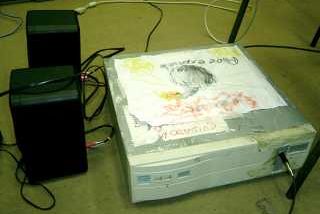
Multiple frequencies mobile transmitter
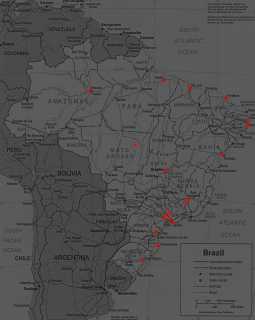
February 2010
Thanks to Patricia Freitas, Rafael 2K and Paulo Lara
Notes:
(1) Database of ABERT – Brazilian Association of Radio and Television Broadcasting Stations
(2) Folha de Sao Paulo, 2nd June 2007.(3) Bertolt Brecht, The Radio as an Apparatus of Communication, 1932.
(4) Surveillence and data exchange restrictions have been largely debated in relation to the exceptional measures of the “war on terror”. See the report by NGO Privacy international – “Speaking of Terror: A survey of the effects of counter-terrorism legislation on freedom of the media in Europe”. Another good example of data exchange restrictions is the recent internet law against piracy passed in France in early 2010. (http://news.bbc.co.uk/1/hi/8436745.stm).
(5) According to the data survey released by The African Media Initiative (BBC World Service Trust, 2006) radio is the most accessible and consumed media in sub-Saharan Africa (sample countries include Angola, Botswana, Cameroon, Democratic Republic of Congo, Ethiopia, Ghana, Kenya, Mozambique, Nigeria, Senegal, Somalia, South Africa, Sierra Leone, Tanzania, Uganda, Zambia and Zimbabwe) For a detailed account on the historical political role of radio in Africa, see Charles Heler’s analysis of the politics of information in Togo – “Togo: Three case studies in the Politics of Information”, 2008. A more general view can be found at: Malick Ndiaye et. al, “Radio and ICT in West Africa : Connectivity and Use”, 2008, available at: http://www.cipaco.org/.
(6) http://www.globalsecurity.org/military/world/haiti/politics.htm
(7) http://cpj.org/blog/2010/01/haitis-radio-tele-caraibes-lost-its-offices-not-it.php
(8) http://www.un.org/apps/news/story.asp?NewsID=33538&Cr=haiti&Cr1=
(9) http://www.digitaljournal.com/article/285843
(10) UN News Centre, In Haiti UN radio station resumes broadcasts with French support, 20 Jan 2010 – available at http://www.un.org/apps/news/story.asp?NewsID=33538&Cr=haiti&Cr1=and Associated Press, Haiti radio fills information void in disaster, in The Guardian, 20 Jan 2010
(11) see the report of NGO Intervozes, “Concessoes de Radio e TV: onde a democracia nao chegou”, available at: http://www.intervozes.org.br/publicacoes
(12) Francesco Jodice, São Paulo City Tellers
(13) Camila Antunes, São Paulo Ilegal, in Veja São Paulo – 11/03/2009(14) see Article 220 (which forbids monopoly), Article 5 (which guarantees freedom of expression), and Article 225 (which reserves collective rights to air) of the Brazilian Constitution.

